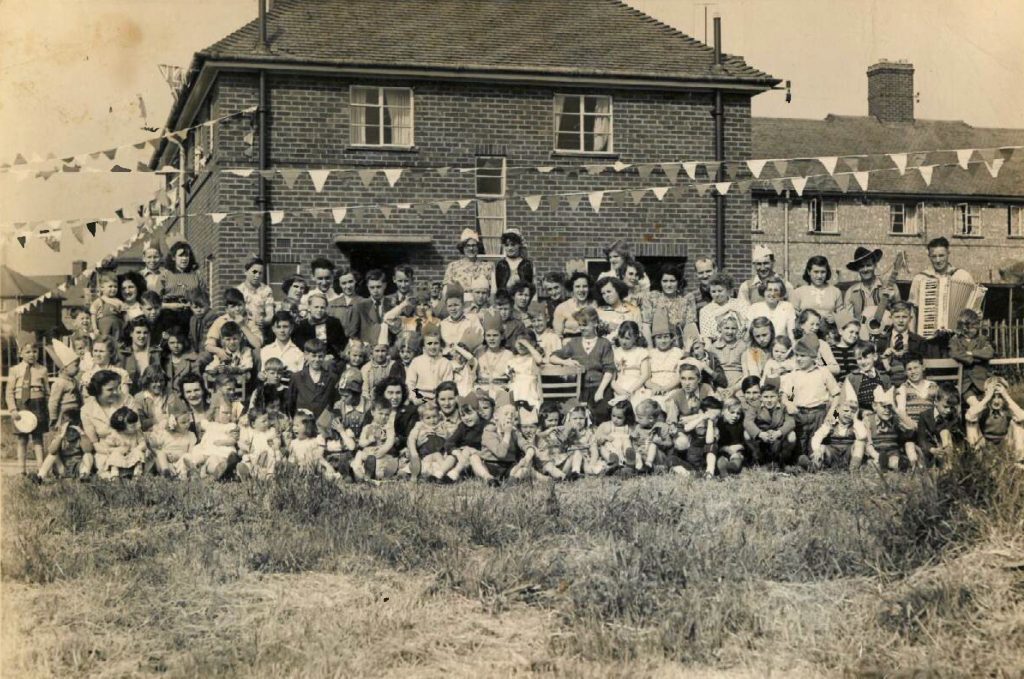Do we take our local community centres for granted? Celebrate the past, present and future of community spaces with us as a part of our exhibition Boundary Encounters (22 July – 29 October).
Over the decades, these welcoming spaces across the UK have offered people of all backgrounds opportunities for learning, social connection and community support. In this illustrated post, enjoy uplifting memories from four of our local community centres in Oxfordshire, who we’ve been lucky to work with this year.
Bullingdon Community Centre

East Oxford’s Bullingdon Community Centre opened in the 1940s and was self-built by local residents. Bullingdon’s rich history of activities include bingo, old-time dancing, ladies’ nights and a youth club. In the late 60s Oxford Mencap (founded in 1961 by parents of children with learning disabilities) initiated the ongoing 7 o’clock Club, using the centre weekly for their lively social club.

In 2016, The Bullingdon Community Association began a long campaign for the renovation of the building, which would see several wins and setbacks. In March 2020, plans were put on hold due to the pandemic, but the centre finally celebrated its new look in January of this year.
Cutteslowe Community Centre

Pictured in the above photo, a queue of local children pass through a war-demolished wall in Cutteslowe sometime between 1934 – 1959, overlooked by a policeman. Cutteslowe Community Centre itself was founded in 1954, with the centre’s current building opening in 1988 on the grounds of the Primary School. Cutteslowe has a history of supporting local residents through educational opportunities and offering facilities for recreation and leisure time, with the object of improving conditions for life for local people.

Popular programmes include Dance Club, Family Art Club, A Community Café and Community Larder, Eco makers and Shakers, Strength and Balance classes, and Portuguese classes for children. In May and June this year, Modern Art Oxford ran workshops with local residents and members of the Cutteslowe team, with conversations continuing during the centre’s Community Larder Day for local residents.
Florence Park Community Centre

The much-loved Florence Park Community Centre was built in 1952 and opened to local communities in 1957. Over the years, the centre has expanded to include a hall with parquet flooring, a lounge room and a kitchen and in 1967, Florence Park became the first community centre in the city to have a licenced bar, which later became the social club.

Today, it offers an impressive programme of activities including the over 60s club, Toddle Time, Book Group and The Social Pub Sunday Lunch alongside live gigs, workshops and events which take place regularly throughout the year. Modern Art Oxford ran workshops at Florence Park in May and June this year, including as part of the centre’s popular Over 60s’ lunch club.
West Oxford Community Centre

Built in 2000, West Oxford Community Association is a small local charity supporting the wellbeing of people living in the community and beyond. West Oxford Community Centre is found just off Oxford’s Botley Road, next to the old Tumbling Bay Bathing Place, West Oxford Bowls Club, and a popular playground and multi-use games space.

The centre’s Tumbling Bay Café is an independent café for the community, run by local couple Tom and Vladimira Imre. Regular activities at the centre include the Chinese Happy Place, Gentle Moves Exercise, Oxfordshire Mind, baby and toddler groups, Young Pioneers, Down’s Syndrome Oxford and many more. The centre also houses The Little Health Hub for complementary and talking therapies for all ages and has one of the largest community food larders for surplus food, where anyone can become a member.
Modern Art Oxford would like to also thank North Oxford Community Centre, who worked with us as part of Boundary Encounters this year. To discover more about North Oxford, and all of our community centres featured, visit our Piper Gallery until 29 October.
This community centres collaboration is made possible thanks to the support of the Oxford City Council Community Impact Fund, The Arts Society, and Oxford University Small Community Grants Scheme.
